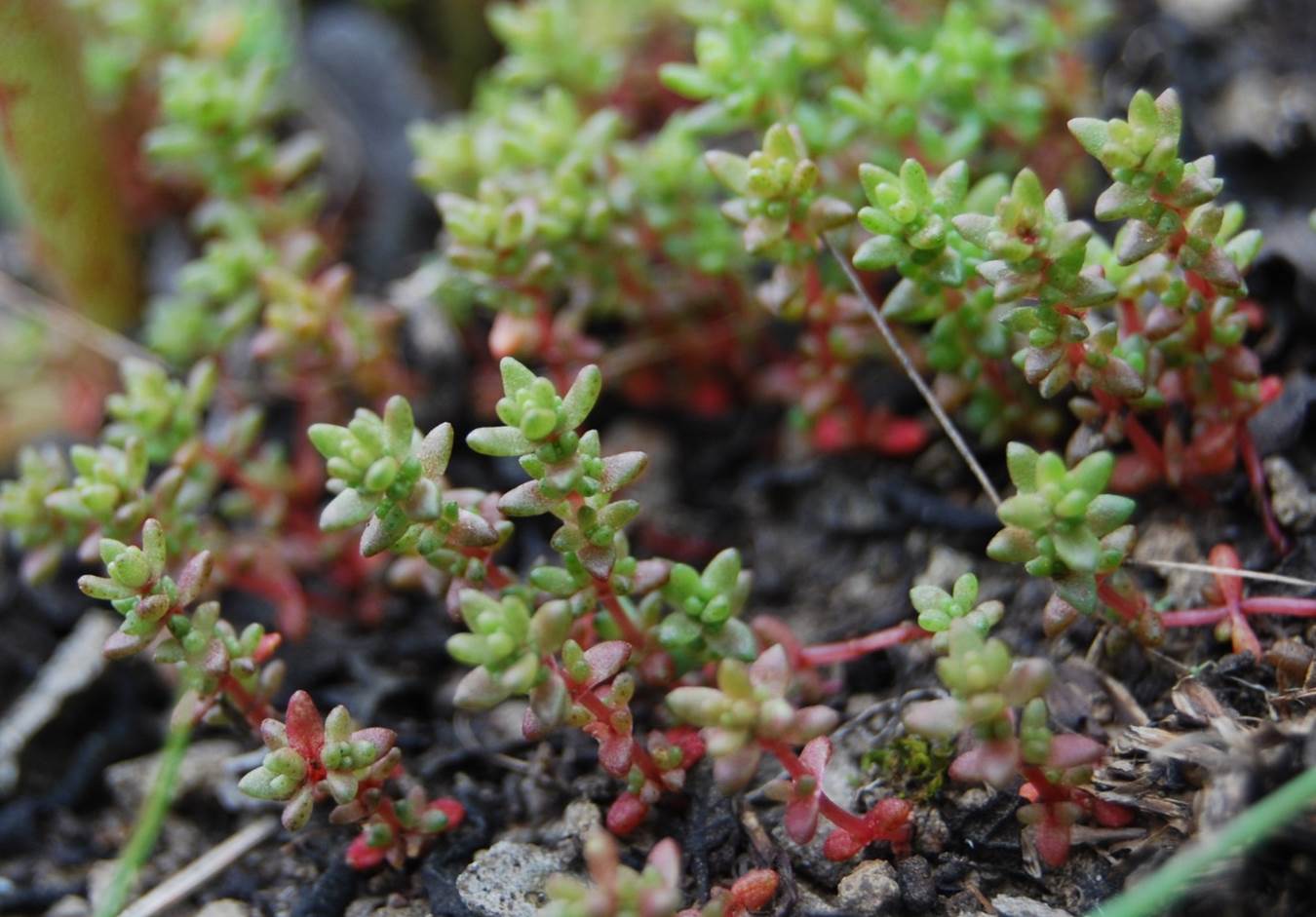Scientific Name
Crassula connata (Ruiz Lopez & Pavon) A. Berger
Family
Crassulaceae
General
This tiny flowering plant usually grows in dense patches, usually on north facing slopes. Initially green, the plants turn red as they dry.
CI
This plant is quite abundant in its preferred habitat.
References
More on this species at CalFlora.
The Jepson Manual (2012: 666, Crassulaceae by Steve Boyd).
McAuley (1996: 317).

Crassula connata young plants on the hillside to the south of University Glen, CI (11 January 2011).

Crassula connata young plants on the hillside to the south of University Glen, CI (11 January 2011).

Crassula connata plants in flower on the hillside to the south of University Glen, CI. Note the young Dudleya blochmaniae (with succulent, globular leaves) (19 February 2005).

Crassula connata plants in flower on the hillside to the south of University Glen, CI (19 February 2005).

Crassula connata on the hillside to the south of University Glen, CI (9 February 2008).

Crassula connata on the hillside to the south of University Glen, CI. The red, heart-shaped leaves belong to Pterostegia drymarioides (9 February 2008).

Crassula connata on the hillside to the south of University Glen, CI. As the season moves on and the soil dries, the plants turn from green to red (28 March 2008).

Crassula connata on hill to the west of Aliso Hall, CI. As the plants mature and the soil dries, they turn from green to red (22 February 2013).

Crassula connata on the hillside to the south of University Glen, CI (5 FMarch 2013).
